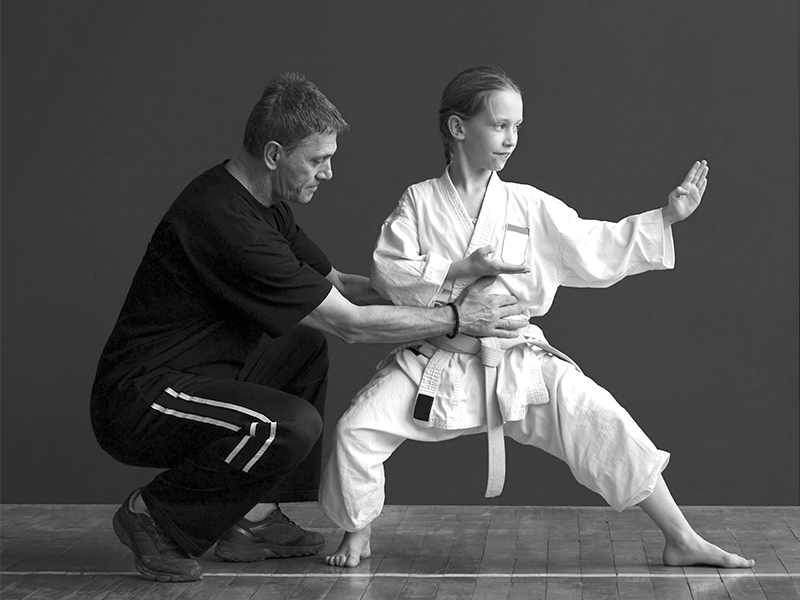There are countless forms of martial arts in the world. Many people select their type of martial arts at random—they base it on what’s popular or what people they know are doing. But what type is less important than the overall benefits of martial arts education. Martial arts can be a way to increase personal development, reinforce positive character skills and to build goal-setting skills. It’s also a tangible way to learn how to bounce back from mistakes or challenges. How can it do this?
• Martial arts involve both physical and mental strength.
• They include tangible tools of measurement—skills that
must be mastered to advance belt levels. All forms
of martial arts have benchmarks that show progress.
• Flexibility and stretching are physical benefits, but
also the learning process aids in “thinking flexibly.”
• There are both team and individual benefits.
When to Introduce Children to Martial Arts
There are a number of times when an introduction to martial arts could benefit your child:
• Toddler programs begin around age 2 with most students around ages 3 and 4. Students learn basics, including following instruction, knowing left from right and fundamentals. They do it in a positive environment often with their siblings, which is great for bonding and building social skills.
• Students ages 4-9 build independence and learn boundaries, they increase their ability to focus and to adapt to a structured learning environment. They grow their confidence, increase body awareness and learn how their bodies work.
• At ages 10-14 they gain a positive peer group, that increases confidence, promotes good decision-making and helps them identify their strengths. They begin to see themselves as leaders and the spatial awareness helps them grow into their changing physicality.
• Being a good role model is a focus for the older teens, ages 15-19. They assume intermediate levels of leadership, work on commitment and follow through and contribute to the community.
Where to Find a School
Finding a martial arts school these days doesn’t take a lot of effort. However, if you are sincere about finding the perfect school for your child, try not to just select the one nearest you. It may take some extra effort, maybe even some trial and error, but when you find the right school you, it’s like finding another family. Do your research, whether it’s searching the Internet, reading books, talking to friends or all of the above. Find out more about what and whom you are getting involved with.
In most cases, if a school has been around for a while, you’re in pretty good shape. In such cases, a respectable school would have several local supporters. Perhaps instead of trophies and medals all over the walls, there would be signs of service, community and leadership. Remember, just because someone has a 10th degree black belt or has won a prestigious-sounding championship doesn’t mean they can teach. Perhaps watch a class or two to see how the instructors with students. Ask around and if you still don’t get a warm fuzzy feeling, give it a try for a day or month. You’ll have a better idea then.
Why Choose Martial Arts for Children
Although physical fitness can be obtained in most any sport, or simply by running, a well-designed martial arts program can capture and retain a child’s interest. Confidence is the key to being successful in any endeavor and in order to build that, you must find a program that has the right balance of education, motivation, structure, challenge and reward. Self-defense is a natural byproduct of any martial arts program and it’s actually not that hard with a little guidance. So it comes down to character, leadership and mindset. A school’s goal should be to train better leaders, not just better fighters. So if we are to truly minimize the need for self-defense, mental or physical, then we must start with building better people.
Master’s Top Ten:
Great questions to ask when interviewing a potential martial arts school.
1. What is your organizational focus?
2. Who are your teachers?
3. Do you have a curriculum and/or lesson plan for students to follow?
4. Do you have a trial program? If so, explain.
5. What commitment level can I expect after the trial?
6. What is the general price structure I can expect after the trial?
7. What other necessary fees can I expect to incur along the way?
8. Do you require students to compete in tournaments?
9. Is the school involved in the community? If so, explain.
10. What references do you have? (Not awards or belt level)



